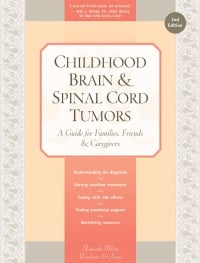Childhood Brain and Spinal Cord Tumors
Treatment summaries
Once treatment and follow-up for recurrence of disease are completed, many children and young adults will no longer be cared for by pediatric neuro-oncologists who are familiar with their history. A transition back to their local doctor often occurs. Moreover, many primary care doctors—pediatricians, family practice doctors, internists, gynecologists—are not fully aware of all the different treatments used for the multitude of childhood cancers, or of the late effects they can cause.
Additionally, when treatment ends, patients and parents are not always given adequate information about the risks of developing late effects in the months, years, or decades after treatment ends. The risks of delayed effects are real, and it is imperative that survivors become informed advocates for their own health care. They need to be educated, in a supportive and responsible way, about the risk of future physical adversities; then if a problem does arise, it will be recognized early and receive prompt attention. Young adults who have survived childhood brain or spinal cord tumors need to be fully informed of their unique medical history and be able to share this information with all doctors who care for them in the future.
A few months before the end of treatment, ask the oncologist to fill out the treatment record, Cancer Survivor’s Treatment Record at the back of this book. Make several copies of the completed form, because this health history will become an indispensable part of your child’s medical records for the rest of her life. It should be kept in a safe place, and a copy should be given to each medical caregiver. When your child leaves home to begin her adult life, this treatment summary should go with her and a copy should be kept in a safe place.
If you do not have a copy of the health history booklet, write down the following important information, which should be in your child’s treatment summary:
- Name of disease
- Date of diagnosis and relapse, if any
- Place(s) of treatment
- Dates of treatment
- Names of attending oncologist and primary nurse
- Name and number of clinical trial (if your child was treated on one)
- Names and total dosages of chemotherapeutic agents used
- Type and amount of radiation used and areas treated
- Name of radiation center
- Date(s) when radiation was received
- Dates and types of surgeries
- Date and type of stem cell transplant, if any
- Any major treatment complications
- Any persistent side effects of treatment
- Recommended medical follow-up for late effects
- Contact numbers for treating institutions
Because many survivors of brain and spinal cord tumors face complex medical, psychological, and social effects from their years of treatment, some institutions have established comprehensive follow-up clinics to provide a multidisciplinary team to monitor and support survivors. The nucleus of the team is usually a nursing coordinator, pediatric oncologist, pediatric nurse practitioner, social worker, and psychologist. The team also includes specialists such as endocrinologists and cardiologists.
Yearly appointments with follow-up programs usually include a review of treatments received, counseling about potential health risks (or lack thereof), and case-specific diagnostic tests (e.g., hormonal studies or testing for learning disabilities). Follow-up clinics not only provide comprehensive care for long-term survivors, they also participate in research projects that track the effectiveness of and side effects from various clinical trials. In addition, the follow-up clinics act as advocates for survivors with schools, insurance companies, and employers. If your institution does not provide comprehensive, long-term, follow-up care, you can find a list of survivor programs at www.acor.org/ped-onc/treatment/surclinics.html. Many survivors travel to comprehensive programs for their yearly follow-up visits.
Table of Contents
All Guides- Introduction
- 1. Diagnosis
- 2. The Brain and Spinal Cord
- 3. Types of Tumors
- 4. Telling Your Child and Others
- 5. Choosing a Treatment
- 6. Coping with Procedures
- 7. Forming a Partnership with the Treatment Team
- 8. Hospitalization
- 9. Venous Catheters
- 10. Surgery
- 11. Chemotherapy
- 12. Common Side Effects of Chemotherapy
- 13. Radiation Therapy
- 14. Peripheral Blood Stem Cell Transplantation
- 15. Siblings
- 16. Family and Friends
- 17. Communication and Behavior
- 18. School
- 19. Sources of Support
- 20. Nutrition
- 21. Medical and Financial Record-keeping
- 22. End of Treatment and Beyond
- 23. Recurrence
- 24. Death and Bereavement
- 25. Looking Forward
- Appendix A. Blood Tests and What They Mean
- Appendix C. Books and Websites

